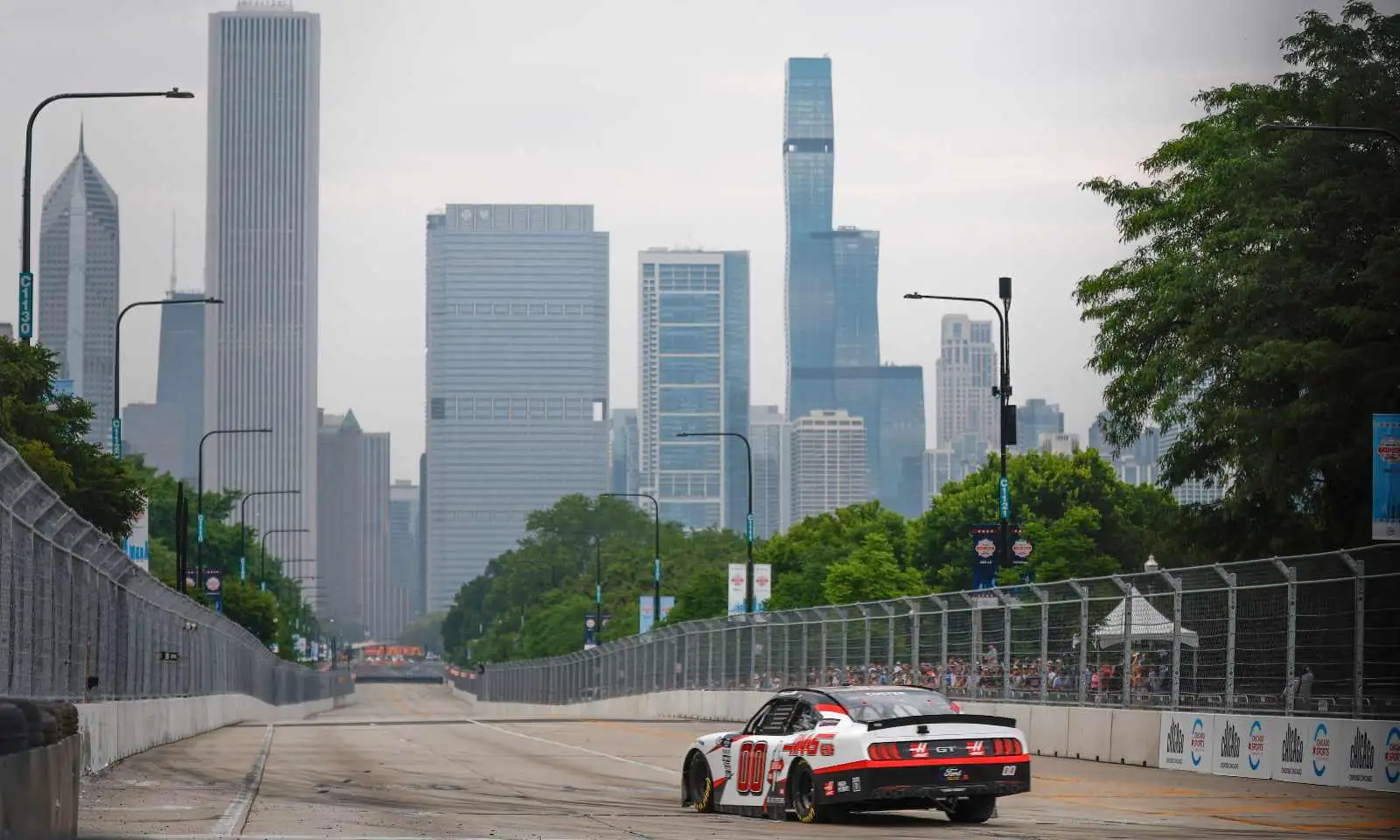Why the Cup Series is mimicking Formula 1’s street racing trend

Street courses have been a defining factor in Formula 1 since the series’ inaugural year in 1950 – but the trend has exploded in recent years. In fact, even NASCAR has mimicked the street course trend by introducing its first race on public roads in 2023.
This weekend marks the Grant Park 165, the NASCAR Cup Series’ second attempt at a street race. The track in Chicago, Illinois, is unique in American stock car racing – but when it came to developing it further, NASCAR took inspiration from Formula 1.
NASCAR hosts street races in Chicago for the second time
When it comes to Formula 1, the push to add more street circuits to the calendar can be polarizing, but it makes sense. Monaco was one of the most legendary Grands Prix in history, and in the modern era, a street circuit is an easy way to bring motorsport to the people rather than asking them to drive to a racetrack.
For NASCAR, however, street racing makes much less sense.
It’s no secret that American stock car racing takes place primarily on oval tracks – and there are many reasons for this.
First of all, the road network in the Americas was far less robust compared to Europe. The indigenous communities that inhabited the Americas before the arrival of European settlers tended to have a closer relationship with nature. Rather than conquering it with roads or other forms of infrastructure, indigenous peoples lived closer to the land and traveled largely on foot or horseback.
Because centuries of war and innovation in Europe had created a large network of roads, there were many places for early drivers and racers to test their cars, and many cities were connected by these roads. In the Americas, civilizations were farther apart and there were fewer roads connecting them; our racing had to develop elsewhere.
As a result, in many communities, the easiest place to host a race of any kind was a dirt track at a local fairground. These fairgrounds were popular gathering places for rural communities, and as technology advanced, horse racing was soon replaced by auto racing at the grassroots level.
As racing became more professional, it made sense for a series like NASCAR to simply expand on the already well-known oval racing rather than focusing on an entirely new form of motorsport.
More about NASCAR and Formula 1:
👉 NASCAR comes to Chicago: The “Road Course Ringers” come to the race
👉 F1 vs. NASCAR: How US racing is finally discovering the magic of rain
And there is another sticking point. After World War II, American racing organizers tried to organize European-style street races in a few select cities around the country. But after a seven-year-old boy was killed on the Watkins Glen race track, racing on public roads was banned.
While road and street racing fans sought to convert disused airfields into exciting race tracks or build permanent street courses from scratch, oval racing remained popular. This is because these venues usually had adequate spectator areas or were located on private property where different legal expectations applied.
However, NASCAR has also regularly included road course races on its calendar. The Daytona Beach Road Course appeared on the NASCAR calendar in 1949, while Linden Beach, Willow Springs, Riverside, Bridgehampton, Watkins Glen, Road America and others were added to the calendar in the 1950s.
In fact, there are only two seasons in NASCAR history in which not include a road race: 1959 and 1962.
Non-oval racing was a great way to draw crowds, challenge regular NASCAR drivers, and introduce drivers from other disciplines to stock car racing in a way that was more familiar to them.
However, street circuits have always been different. They are usually narrow and lined with unyielding barriers. The corners are also generally quite tight. These features are not a recipe for success for the heavy, wide production cars.
But Why Is NASCAR going into street racing?
Well, for some of the same reasons as Formula 1 – and also for some very NASCAR-specific reasons.
Why NASCAR is taking over the streets of Chicago
To put it simply, NASCAR is pushing its own boundaries in an effort to evolve.
Speaking to Front Office Sports last year, Ben Kennedy, NASCAR’s SVP of Racing Development and Strategy, said: “TThis is part of our long-term strategic plan. About three years ago (…)We’ve launched a number of initiatives to think about, “Hey, how can we take the sport to the next level?”
These initiatives were extremely comprehensive.
In 2022, NASCAR unveiled its Next Gen car. This machine was developed with international GT3 regulations in mind, meaning it can better handle street courses while reducing the costs associated with building and running a machine.
The goals included developing a car that was better suited to road courses and attracting top international talent to the series by developing a NASCAR car that felt more like a vehicle that international drivers would have come into contact with during their careers.
(And that goal worked, by the way; the first winner of the Chicago street race was Australian Supercars driver Shane van Gisbergen, driving Trackhouse Racing’s Project91 car. Project91 is the name of a car specifically designed for international talents like van Gisbergen or Kimi Räikkönen.)
In addition, NASCAR is trying to develop its fan base. Anyone who follows motorsports is probably familiar with the stereotypes associated with NASCAR fans, and the series itself noticed that its demographics were stagnating.
Entering street racing was a bold move designed to attract a whole new audience to NASCAR, and in 2023, it worked.
Before the inaugural event in Chicago, NASCAR estimated that 80% of ticket holders were attending a NASCAR race for the first time. Many journalists reported their impressions of the event, which generally included detailed descriptions of spectators who were mesmerized by seeing a race car in action for the first time in their lives.
“We wanted to create options that appeal to everyone,” Ben Kennedy told Front Office Sports in 2023.
“So everything from a general admission ticket that allows people to really walk around the entire park, see the drivers on the grid, go down and listen to the music for the festival and really roam around, all the way up to our highest zone area.”
In 2023, the event took the sport in new directions. It reignited the passion of longtime NASCAR fans. It also brought a lot of money to the city of Chicago. It was a risky event, but it was a risk that paid off handsomely.
Ahead of this weekend, NASCAR hopes it can refine the race weekend formula that worked so well the first time around.
Organizers of the Chicago race have heard the criticisms raised in 2023 and have made plans to address them. They have also organized an impressive program of musical performances to provide a greater attraction for those who are unsure about attending a race for the first time.
Formula 1 fans have criticized the trend toward a racing calendar with lots of street races, but that fatigue hasn’t yet hit the NASCAR world. The Chicago street race is still new enough to be considered a novelty – but its true test will come this year when fans see if it’s the kind of show they want to see more often in the future.
Continue reading: Why so serious? Four valuable lessons Formula 1 can learn from the polarizing NASCAR series



